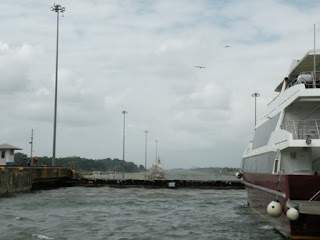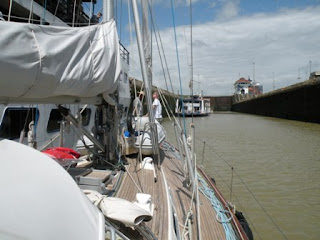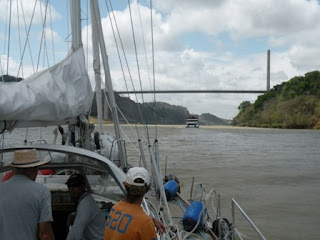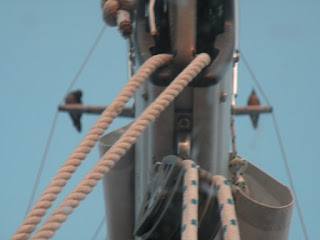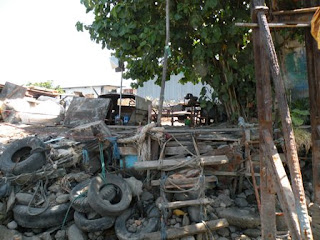
Oxford, MD - We left Beaufort, NC on May 11 and had rough seas rounding Cape Lookout. We motored into them with both sails. About six hours later, the sea calmed and we motored all evening, rounding Cape Hateras about 10 p.m. About 4 a.m., the wind came up and we sailed all morning, including a stretch of 20k wind where the boat speed reached 8k.

Captain Squall
We motored as we neared the ship channel for the Chesapeake Bay entrance, passing military boats along the way. The weather report had severe thunderstorm warnings out for counties in North Carolina and Virginia, but we weren't sure where those counties were; however, as we neared the Chesapeake Bay Bridge Tunnel, the sky grew dark and lightening flashed. We took down the mainsail and hunkered down behind one of the tunnel abutments just in time for a downpour and lightening show. We watched the squall on the radar and were glad the anchor was holding. After the storm passed, a giant car carrier ship passing through the channel hailed us on the VHF to see if we were alright, which we were. Steve told me that he'd gotten the nickname captain squall in the Caribbean since they'd endured a squall four consecutive times he'd come on watch.
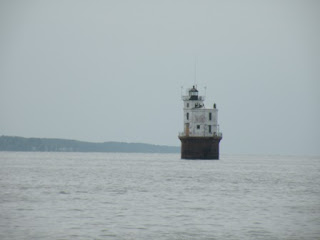
Narrow Channels
So, we got back under way up the bay to Cape Charles. The Chesapeake Bay is relatively shallow and towns along its coasts have dredged channels out to deep water. By this time it was dark and we had to navigate flashing red, white, and green lights and ranges to enter the harbor. Once there (of course, we'd never been there), it was just a small place with a town on one side and an industrial complex 100 yards across the harbor. We parked right in the middle.
Layers
By this time, we'd stopped using fans to keep cool while sleeping at night and gotten out the blankets again. We had to wear several layers top and bottom to keep warm. What happened to summer?
Oxford
We had a smooth sail that morning up the bay until the wind died and we motored into the dark.
Of course, as we neared the channel entrance to Oxford on the Tred Avon river, the wind came up again and we rolled our way passed buoys and lights and decided to seek a protected anchorage across the bay near a place called Cornersville. It was a good decision and we had a peaceful night's rest.
The next morning we arrived at Bachelor Point Marina, figured out how to tie up to a "single finger pier," and called it quits. Oxford is another historic east coast town dating back to the 1600s.
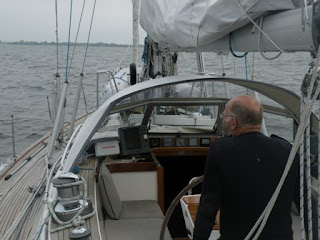
A Sailor Looks at Seventy
Steve has spent his sixties with Litha, and before her, with Beltane. They've kept him in great shape and he's enjoyed them immensely. I guess you could say unfathomably. He loves the navigation, the sailing, the sail tuning, the daily challenges, planning trips, maintaining and customizing each boat, repairing Litha's scars, the self sufficiency of it all. But 5600 miles in four straight months is enough.
To travel hopefully is a better thing than to arrive.
-- R. L. Stevenson






















